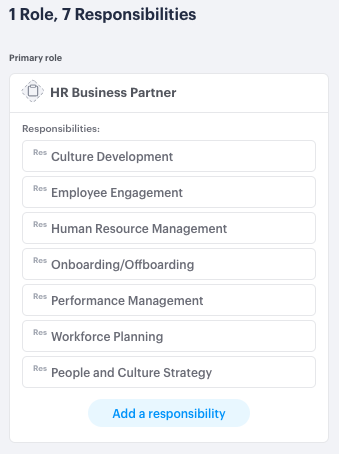You’ve decided to make some significant changes in your organizational structure. These changes may be driven by one or many factors. Your redesign may be a response to external forces such as economic or industry changes. It may also be the result of internal factors, including a shift in organizational goals or focus.
No matter the catalysts, you want to ensure that these changes lead to fruitful outcomes. To do this, you must think beyond moving items around on an organizational chart. Successful restructuring happens when business leaders are willing to examine and reconsider multiple factors, such as the following:
- Hiring practices
- Responsibilities
- Reporting structures
- Interorganizational relationships
- Training and development
- Management styles
All of these things must be addressed to ensure the restructuring is supported by meaningful change.

What are organizational design principles?
Organizational design principles are the philosophies, guidance, and best practices that determine how leaders approach organizational structuring.
When they are used correctly, design principles can ensure that changes lead to an agile organization with an empowered workforce. That requires putting significant thought into how those principles should be applied when going through the restructuring.
What are the elements of organizational design?
There are nine elements of organizational design, and it is important to consider all of them during the process. However, keep in mind that the ways these principles are applied and prioritized can and should vary. Remember that the purpose of restructuring is to reconsider the philosophies behind your organization, not just lines and boxes.
Here are those nine principles:
1. Invest time in assessing how things are now
One of the biggest mistakes that leadership makes is failing to take a thorough assessment before conducting a redesign. Never assume you have a clear vision of your current state without conducting an analysis. Otherwise, you could be making assumptions based on outdated data.
Start with the current organizational design documents. Are they accurate and up-to-date? Are roles, responsibilities, and team structures described correctly?

A careful analysis can uncover current sources of friction and inefficiencies while also identifying strengths that can be built on later.
2. Consider structure process and people
It’s tempting to focus on low-hanging fruit during a restructuring. In most cases, that’s the reporting structure. However, you need to give the human and process aspects the attention they deserve. If you don’t, you’ll end up with an incomplete restructuring that doesn’t address core issues or prepare the organization to face future challenges.

Organizational design comprises structures, processes, and people. It’s imperative that all of these are reviewed during the restructuring process.
3. Focus on changing thought processes
It’s important to be strategic, but before leaders begin treating workers as commodities that can be shuffled around the organizational structure, they need to keep some perspective.
Arguably, the most vital resource of any organization is its people. Employees have emotions, beliefs, and individual goals. They also form their own attitudes about how the organization works now and how they perceive it will work in the future.
It would be a big mistake to ignore those human elements — and then be surprised at what will likely be not-so-positive reactions to change. Instead, leaders should prioritize identifying where there are doubts, negative attitudes, and fears and then work to change those mindsets.
-1.jpg?width=563&height=400&name=pexels-jopwell-2422293%20(1)-1.jpg)
The best way to do this is through clear communication and role modeling. When team members understand the reason for upcoming changes and are confident that the results will benefit them, they are more likely to react positively. Even better, they will embrace the opportunity to gain more critical capabilities.
4. Foster communication between leaders and employees
Conversations about organizational redesign tend to work from the top down. C-level executives and department heads may have full information long before others further down the management structure are even aware that any change is pending.
Structural changes should not be communicated via mass email or dropped on employees during a staff meeting. These are the kinds of changes that significantly impact employees in many areas, such as:
- Team assignment
- Direct supervisor
- Daily responsibilities
- Chain of command
- Workflows
Organizational restructuring can even impact where team members work. When these changes are dropped on employees unexpectedly, they can lose trust in the company, leading to poor performance, lower job satisfaction, and higher turnover.
Announcements about major changes should be delivered directly and personally, and workers should be provided the opportunity to ask questions.

Personal communication rightly puts the decision-makers in the position of justifying the changes they are making, clarifying how it will impact team members, and showcasing the benefits of the new structure.
While leaders are busy strategizing and determining which changes should be made, they must also focus on messaging.
5. Prioritize strategic goals, not current problems
While it is important to have a clear picture of the current state of the organization, there is a danger in putting too much focus on it.
Yes, organizational changes are often driven by failures and frustrations. However, if the only focus is on fixing current problems, the end result will likely be trading one set of problems for another. Instead, the majority of time and effort needs to be spent on defining and pursuing new goals.
Company leadership should be able to articulate a clear vision statement about what the organizational redesign will accomplish. Then, they should be able to align that vision statement directly with organizational strategy.
6. Thoroughly research and test proposed changes
An organizational redesign should never be based on intuition or assumptions. There is way too much at risk for that. In fact, this approach almost universally results in significant issues down the road.
Instead, the best approach is to challenge assumptions and question intuition. This will ensure that biases and agendas don’t have too much influence on redesign decisions.
7. Don’t hire on the fly — Define roles clearly first
As the organizational restructuring unfolds, new positions will come to light. It’s tempting to begin filling those with ideal candidates right away. Resist this. Wait until all roles are clearly defined before moving into the recruiting and hiring stages, even internally.
Otherwise, you create a needlessly competitive atmosphere as various teams are vying against one another to close skills gaps and fill new positions. This atmosphere can develop fast, and it will distract you from what you are trying to accomplish.
Instead, focus on roles first. Once those are defined, team leaders can begin seeking out talent in an internal recruiting process that is based on fairness and transparency.
8. Define success and how to measure it
How can you determine whether your organizational restructuring is a success if you don’t have success clearly defined? And how can you measure success if you haven’t established any metrics or are using old metrics that don’t align with your goals?
Unfortunately, many companies do exactly these things when it comes to organizational redesign.

Before rolling out a redesign, your team should have a precise definition of what success means. This definition of success should be measurable using key performance indicators. Determine both short- and long-term quantifiable goals, and come up with ideas for boosting your efforts if critical KPIs are not met.
9. Manage risk
Major organizational changes are inherently risky. The largest risk is that the restructuring fails to produce positive results or that it makes things worse. There is no way to completely eliminate these risks. However, they can be managed and mitigated.
To manage risk, think about areas where failure is most likely to occur. These include poor execution, failure to engage employees, and business disruptions.
Poor timing is often the cause of the latter issue. For example, rolling out a restructuring during your company’s busiest time of year is likely to create serious continuity issues. Something as simple as delaying the rollout by a few weeks could be the difference between success and failure.
Why address organizational design principles?
The purpose of organizational design principles is to provide leaders with a set of guidelines to follow. When these are addressed during a redesign, it forces executives to think beyond simply moving positions and responsibilities around.
Leaders must consider the human impacts of organizational changes, put their assumptions and motivations to the test, and prepare to engage in honest communication with team members. By doing this, they can create organizational changes that are widely embraced and lead to better long-term outcomes for the company.
How to restructure the design principles behind your organization
The best place to start is with your current state assessment. Look at your existing organizational structure and identify where it is clear that design principles weren’t used or where they weren’t used successfully.
For example, you might recognize that your company tends to make impactful changes in a rather ham-handed way that erodes workers’ trust and makes them view changes negatively.
Later, as you continue working through the restructuring process, hold up every decision to the nine principles defined above. Determine which ones apply and then use those principles as a guidebook.
Where organizational mapping fits in
Org design principles encourage decision-makers to think beyond moving lines and boxes around an organizational chart. However, organizational chart software is still a valuable tool in this process.
Advanced charting software goes beyond lines and boxes. It allows company leadership to clearly design roles and responsibilities, work through various prospective case scenarios, and create documentation that will make future organizational redesign efforts that much easier.
Try Functionly for your restructuring process.




